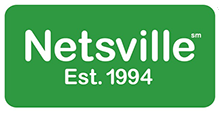Netflix’s Ad Conundrum
Netflix is one of the largest streaming services in the world. Many people forget Netflix’s humble beginning in 1997, not as a streaming service but rather a DVD by mail service. Netflix did not roll out the streaming services until 2007, and to this day has remained Ad free. This has been Netflix’s position until a few months ago when they started promoting Netflix original content in between shows. Your mouth may be watering thinking about all the potential dollars that Netflix could earn with the addition of ads, between a no ad version and the money coming in from the advertisement but advertising can create even more potential than that, ALmost 80% of Netflix’s users are from the United States, they could begin spreading their content all over the world with the option for an ad-supported free subscription. Netflix holds all the cards and they have endless options, read more below!

Are ad-supported tiers too much temptation for Netflix or Prime Video to resist?
With growing competition in video streaming services, Netflix could reverse their former “no ads ever” policies. Let’s look at the pressure points.
Ryan Kelly on January 2, 2019 at 8:15 am
A few months ago, the internet had a mild freak out when Netflix started showing users commercials for other video content between episodes. Although Netflix described it as a small-scale experiment — the ads just promoted other Netflix shows — some users took to Twitter to announce that if Netflix began running ads they would cancel their service.
Viewers who enjoy Netflix’s programming urged the company to leave well enough alone. Many feared that the area of ad-free streaming on Netflix, and for that matter videos on Amazon Prime, was coming to a close.
Though some of the criticism was overwrought, there was a precedent for such fears: Forty or so years ago, consumers began paying for cable TV, in part to enjoy ad-free programming. But the lure of revenues proved too strong for most. Although HBO and Showtime have remained ad-free all of this time, the vast majority of cable networks haven’t.
That may prove to be the case with Netflix and Amazon too. Both could offset the huge expense of creating new programming with ads while also growing their subscriber base. Following Hulu’s lead, the streaming services could offer a free version with ads as an alternative to the premium paid version.
Netflix’s huge advertising potential
To be clear, Netflix has given no indication that it is considering running ads. CEO Reed Hastings has also intimated that advertising is not in the cards. But industry watchers have pointed out that if Netflix wants to expand its international footprint (currently 80 percent of its subscribers are in the U.S.), then it could quickly achieve that by offering a free ad-supported version.
Of course, offering advertising would bring its own troubles too. The ad business in 2019 is not for the faint of heart. There’s increased regulatory pressure being put on both Google and Facebook right now and a lot of that stems from how they monetize user data through advertising.
With that said, the marketing industry is clamoring for an alternative to the Google/Facebook duopoly. Most marketers funnel the bulk of their direct response ad spending to Google and Facebook as other channels cannot match the performance, scale and targeting capabilities of these giants.
Netflix, which currently has 130 million subscribers, could drastically boost that number with an ad-supported tier; it’s likely that Netflix could eclipse both Snapchat and Twitter both in terms of users and ad revenue. Even better, Netflix could develop its own pixel and start aggregating data outside its ecosystem the way Google and Facebook do.
Netflix would also likely let advertisers target consumers based on their activity on the platform. Using proprietary algorithms and machine learning, Netflix can accurately predict which content viewers will like to watch. There’s no reason why such data couldn’t also be used to serve ads to users based on the content they consume.
Amazon is a different story
Amazon is already a major player in advertising; its ad business is expected to generate $4.6 billion this year, according to eMarketer. Amazon’s “other” category, which includes advertising, grew 130 percent in its first quarter versus the year-ago quarter.
While advertising is for now just a profitable sideline for Amazon, the company has shown a willingness to experiment with what would make an ad-supported version of Prime plausible. Unlike Netflix, Amazon is also already under the watchful eye of regulators.
On the other hand, an ad-supported version of Prime would offer less incentive for consumers to sign up for Prime. “Free” shipping may be the main reason people pay for Prime, but Amazon’s formidable streaming video service is a big part of the equation. If Amazon made Prime Video access a la carte through a free ad-supported tier, it would effectively devalue a Prime membership and possibly discourage people from paying for a Prime package.
Is the temptation too strong?
Despite such obstacles, several companies — including WhatsApp and Tumblr — have reversed their former “no ads ever” policies.
Based in Rochester, New York, Netsville is an Internet Property Management company specializing in managing the Digital Marketing, Technical, and Business Solutions for our customers since 1994. For more information, please click here.

